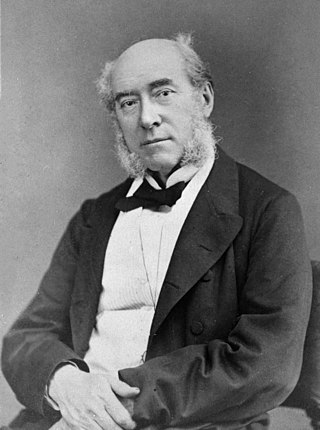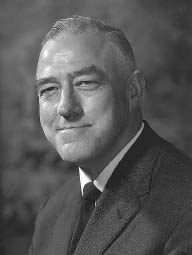
Barts and The London School of Medicine and Dentistry, commonly known as Barts or BL, is a medical and dental school in London, England. The school is part of Queen Mary University of London, a constituent college of the federal University of London, and the United Hospitals. It was formed in 1995 by the merger of the London Hospital Medical College and the Medical College of St Bartholomew's Hospital .

Sir Archibald Hector McIndoe was a New Zealand plastic surgeon who worked for the Royal Air Force during the Second World War. He improved the treatment and rehabilitation of badly burned aircrew.
Oral and maxillofacial surgery is a surgical specialty focusing on reconstructive surgery of the face, facial trauma surgery, the oral cavity, head and neck, mouth, and jaws, as well as facial cosmetic surgery/facial plastic surgery including cleft lip and cleft palate surgery.

Sir William Fergusson, 1st Baronet FRCS FRS FRSE was a Scottish surgeon.

Sir Michael Francis Addison Woodruff, was an English surgeon and scientist principally remembered for his research into organ transplantation. Though born in London, Woodruff spent his youth in Australia, where he earned degrees in electrical engineering and medicine. Having completed his studies shortly after the outbreak of World War II, he joined the Australian Army Medical Corps, but was soon captured by Japanese forces and imprisoned in the Changi Prison Camp. While there, he devised an ingenious method of extracting nutrients from agricultural wastes to prevent malnutrition among his fellow POWs.
Paul Tessier was a French maxillofacial surgeon. He was considered the father of modern craniofacial surgery.
Sir Henry Sessions Souttar was a British surgeon with a wide breadth of interests. He trained first as a mathematician and engineer. His engineer’s training enabled him to design and make new types of surgical instrument. His mathematical training made him a leader in setting out the first British guidelines for Radiotherapy. In 1925 he pioneered "blind" open heart surgery on a patient with congenital heart defect. This was not repeated until 1948.
Oliver Cope, was an American surgeon known for his work in parathyroid surgery, burns treatment and breast cancer treatment. He is also remembered for describing the Churchill-Cope reflex.
The Bradshaw Lectures are prestigious lectureships given at the invitation of the Royal College of Physicians and the Royal College of Surgeons of England. It is held on alternate years in rotation with the Hunterian Oration.
Sebastian Stewart Dickinson was an English Liberal Party politician who sat in the House of Commons from 1868 to 1874.

Sir Harold Jalland Stiles was an English surgeon who was known for his research into cancer and tuberculosis and for treatment of nerve injuries.

Sir Anthony Alfred Bowlby, 1st Baronet was a British Army officer, surgeon and pathologist.

John Gay was an English surgeon.
Gerald Westbury OBE FRCS, usually known as Charley Westbury, was an English surgeon who pioneered treatments for cancer, particularly sarcoma, developing techniques for preserving muscle function after surgery. He also developed new techniques of reconstructive surgery for cancers of the head and neck, and championed a multidisciplinary approach to cancer treatment.

Sir Patrick Heron Watson was an eminent 19th-century Scottish surgeon and pioneer of anaesthetic development. He was associated with a number of surgical innovations including excision of the knee joint, excision of the thyroid and excision of the larynx for malignant disease. He was President of the Royal College of Surgeons of Edinburgh on two occasions, an unusual honour, and was the first President of the Edinburgh Dental Hospital. He was a great advocate of women training in medicine and surgery and did much to advance that cause.

Sir Thomas Peel Dunhill was an Australian thyroid surgeon and honorary surgeon to the monarchs of the United Kingdom.

Tobias Levitt was a South African medical doctor who wrote a textbook on the thyroid.

Arthur Tudor Edwards was a Welsh thoracic surgeon, who worked at the Westminster Hospital, the Royal Brompton Hospital and Queen Mary's Hospital, Roehampton and pioneered lung surgery in particularly pulmonary tuberculosis and lung tumours.
The Overseas Plastic Surgery Appeal is a registered charity in the UK, that exists to provide free facial surgery for poor children and young adults in Pakistan. The OPSA team operate on facial abnormalities including cleft lip and palate.

James Henderson Nicoll FRCS(G), JP was a Scottish paediatric surgeon and professor of surgery at Anderson's University. Nicoll was a pioneer of pediatrics, particularly regarding the care of children both in the hospital and after discharge. Nicoll was most notable for developing a surgical cure for pyloric stenosis and outpatient care of children with spina bifida, and was known as the Father of Day Surgery.












